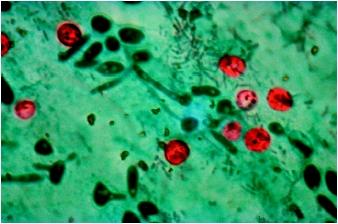 I found Tommyk's notes 2 weeks ago and I can tell that there is a lot of very useful information like this one for example.
I found Tommyk's notes 2 weeks ago and I can tell that there is a lot of very useful information like this one for example. The NBME will ask a lot of questions about serum electrolytes and DIURETICS. This is come up over and over and over again!
LISTEN, for FHA (Acronym Federal Housing Authority). (which stands for Furosemide, HCTZ, and Acetazolamide), YOU LOSE K (cash) FROM THE SERUM!!!!!!!!! (Hypokalemia results) (Think of mnemonic, if the FHA comes, you likely have no Kash!)
LISTEN, if your patient wants a H (HI)- Fidelity (F) stereo, he has to BUY IT UP (B=Bi-carbonate) (Hydrochlorothiazide and Furosemide stands for the H and F), then you must BUY IT UP! ("Buy" sounds like Bicarbonate, and BUY IT UP means the "Buy"carbonate HCO3 levels in your blood will increase!) (LINK:metabolic alkalosis)
LISTEN, all Diuretics lower Magnesium, so THINK that if you sit down to pee (diuretic), you will also have a big MASSIVE GLOB of poop. The M in Massive and the G in Glob of poop stands for Mg coming out. (hypomagnesium)
LISTEN, ALL Diuretics raise uric acid in serum, lowering it in the renal tubules. This mnemonic is easy...DIURETIC SOUNDS LIKE URIC ACID both have "UR". Say it fast. then you will connect! And Diu"r"etic has "r" for raise in serum. (This is of clincal importance as Thiazide Diuretics are used to treat uric acid stones because while serum levels stay high, renal tubule levels remain low!)
LISTEN, the acronym ASA stands for aspirin, and aspirin Overdose is acidic. So the A (Amiloride), the S (Spironolactone), and A (Acetazolamide) . An aspirin Overdose gives you metabolic acidosis!!!!!!!
Also KNOW the connection that the K sparing diuretics STAys in serum. (S=spironolactone, T-triamterene, A-amiloride) (Usually, I found it helpful to recall that H and K stay together usually...) HCO3 leaves in the urine...
LISTEN, for Calcium ions it is tougher. But this works for me. I think of a S-Ca-fFold falling down a building. (You know, for painters). So, Calcium administration makes S (Spironolactone) and F (Furosemide) "fall" out of your urine! See the Ca in word S-Ca-Ffold!!!! (This is clincially important because LASIX or furosemide is given to CHF patients every second which predisposes them to Ca stones in kidney!
REPEAT THIS HIGH YIELD CONCEPTs UNTIL IT STICKS!!!!!! BEcause you will likely be asked this on your test because of the relation to renal stones....Ca for e.g. causes stones. Hypokalemia, Hyperacidosis...And this is SO IMPORTANT, you must repeat my mnemnoics over and over. They worked for a lot of people! And I spent a long time making up these memory mnemonics. Don't let them go to waste! Someone told me my mnemonics saved them! Thanks but please they are for everyone and they are useless unless you repeat them. Please e-mail me if you like the mnemonics. If they are bothersome, I will stop submitting them!!!!!
 The use of N-acetylcysteine=NAC:
The use of N-acetylcysteine=NAC:
 I found Tommyk's notes 2 weeks ago and I can tell that there is a lot of very useful information like this one for example.
I found Tommyk's notes 2 weeks ago and I can tell that there is a lot of very useful information like this one for example. 


